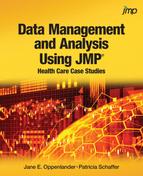Analytic Approach
The problem statement poses two research
questions: “On average do creatinine levels exceed the upper
endpoint (2 mg/dL) of the Stage 1 kidney insufficiency range?”
and “What proportion of patients have creatinine levels greater
than 2 mg/dL?” The three questions below will guide the selection
of appropriate statistical methods.
-
What is the response (Y) of interest and how is it measured? For the first research question, the creatinine level is of interest. It is a continuous variable. For the second research question, the nominal variable indicating creatinine level greater than two should be analyzed.
-
Are predictor variables mentioned in the problem statement? If so, how many and what are their measurement levels? There are no predictor variables mentioned in the research questions.
-
What are you being asked to deliver? A data description, an interval estimate, an answer to a question, or a predictive model? For the first research question, we need a yes or no answer to a question. A test of hypothesis is an appropriate method. For the second research question, a numerical estimate of a proportion is needed. The point estimate of the proportion of patients with creatinine level greater than 2 can be obtained from the sample data. A confidence interval for a proportion will provide a range of plausible values for the true proportion of patients with creatinine levels greater than 2.
Last updated: October 12, 2017
..................Content has been hidden....................
You can't read the all page of ebook, please click here login for view all page.
